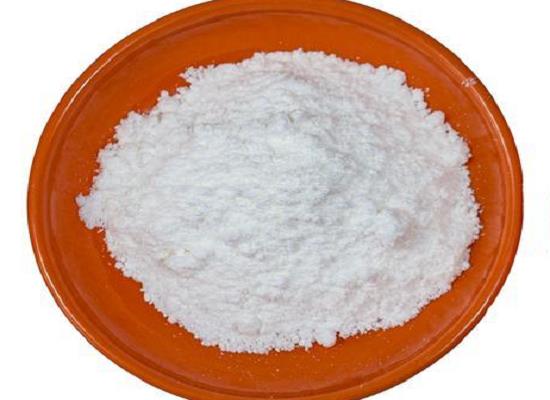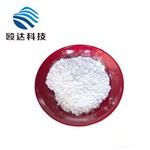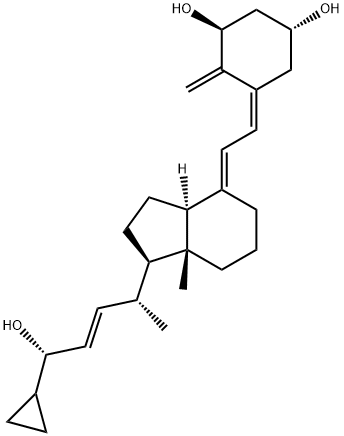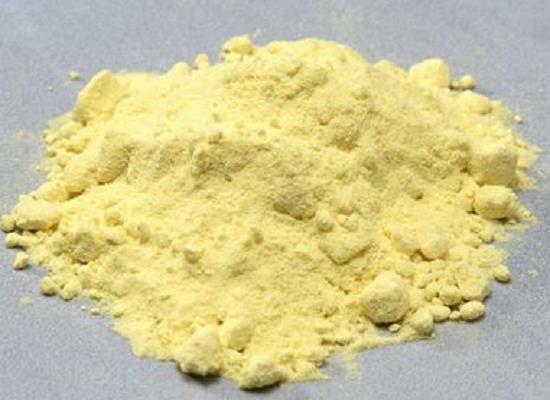Calcipotriene: Mechanism of action, Pharmacokinetics and Side effects
General Description
Calcipotriene, a synthetic vitamin D analog, is utilized primarily in treating psoriasis, leveraging its mechanism of action that involves binding to vitamin D receptors on keratinocytes and modulating the immune system. This modulation includes inhibiting the Th17 pathway and reducing IL-17 production, crucial in psoriasis pathogenesis, thereby decreasing keratinocyte proliferation and encouraging differentiation. Its pharmacokinetics highlight minimal systemic absorption, with metabolism occurring in the liver, ensuring a low risk of systemic side effects. While common adverse effects include skin irritation, pruritus, and erythema, serious reactions like allergic contact dermatitis and hypercalcemia are rare. Combined formulations with betamethasone dipropionate (BD) further minimize these side effects, making calcipotriene a safe and effective option for psoriasis treatment.

Figure 1. Calcipotriene
Mechanism of action
Calcipotriene, a synthetic vitamin D analogue, plays a significant role in the treatment of psoriasis through its interaction with the immune system and skin cells. It operates similarly to natural vitamin D by binding to vitamin D receptors (VDR) present in various cell types including keratinocytes, which are pivotal in skin health. This binding initiates a cascade of effects that modulate the immune response, particularly targeting the Th17 pathway, known for its critical role in psoriasis pathogenesis. Calcipotriene effectively inhibits the activation and differentiation of dendritic cells (DCs) and CD4+ T cells towards the Th17 lineage, thereby reducing the production of IL-17, a key pro-inflammatory cytokine involved in psoriasis. Furthermore, it suppresses the proliferation of keratinocytes and encourages their differentiation, addressing the hyperproliferation characteristic of psoriatic skin. Additionally, calcipotriene has been found to decrease cytokine production by T cells, DCs, and keratinocytes, and promote IL-10 secretion, an anti-inflammatory cytokine, contributing to its anti-inflammatory effects in psoriasis treatment. 1
Pharmacokinetics
Calcipotriene, a synthetic derivative of vitamin D used in the treatment of psoriasis, demonstrates specific pharmacokinetic properties that influence its effectiveness and safety profile. When formulated as part of a Cal/BD aerosol foam, calcipotriene is dissolved in volatile propellants, such as butane and dimethyl ether (DME), which evaporate upon application. This process creates a supersaturated solution that enhances the skin penetration and bioavailability of calcipotriene, making the aerosol foam formulation more effective compared to other forms like ointments. Despite this increased efficacy in delivering the active ingredient to the affected skin areas, systemic absorption of calcipotriene remains low. The extent of systemic absorption is influenced by factors including the integrity of the skin barrier, duration of application, and the concentration of the active ingredient in the formulation. Once absorbed, calcipotriene is metabolized in the liver to its primary plasma metabolite, MC1080, which possesses reduced potency. This metabolite is further processed into calcitroic acid before being excreted in bile. This metabolic pathway ensures that the systemic exposure to calcipotriene and its metabolites is minimal, reducing the risk of systemic side effects and enhancing the safety of calcipotriene as a topical treatment for psoriasis. 2
Side effects
Calcipotriene is used in the treatment of psoriasis and has been associated with several side effects, though generally considered safe and tolerable, especially in combined formulations with betamethasone dipropionate (BD). The most common adverse reactions to Calcipotriene include skin irritation, pruritus (itchiness), and erythema (redness). These side effects are relatively mild and are often minimized when Calcipotriene is used in combination with BD, likely due to the anti-inflammatory properties of BD. More serious but rare reactions to Calcipotriene can include allergic contact dermatitis and hypercalcemia, a condition characterized by elevated calcium levels in the blood. In comparison to topical corticosteroids, which can cause skin atrophy and other more severe reactions, Calcipotriene, particularly in combination with BD, has shown a reduced impact on epidermal thickness, indicating a lower risk of skin atrophy. This suggests that Calcipotriene, especially when part of a combined treatment, offers a safer alternative with fewer and less severe adverse effects. 1
Reference
1. Amat-Samaranch V, Puig L. Safety of calcipotriene and betamethasone dipropionate foam for the treatment of psoriasis. Expert Opin Drug Saf. 2020;19(4):423-432.
2. Taylor A, Singh R, Feldman SR. Review of Calcipotriene and Betamethasone Dipropionate Cream in the Treatment of Psoriasis. Ann Pharmacother. 2023;57(3):341-347.
);You may like
Related articles And Qustion
Lastest Price from Calcipotriene manufacturers

US $0.00-0.00/KG2024-03-19
- CAS:
- 112965-21-6
- Min. Order:
- 1KG
- Purity:
- 99
- Supply Ability:
- 10 tons

US $0.00/KG2023-11-15
- CAS:
- 112965-21-6
- Min. Order:
- 1KG
- Purity:
- 98%min
- Supply Ability:
- 30tons/month


